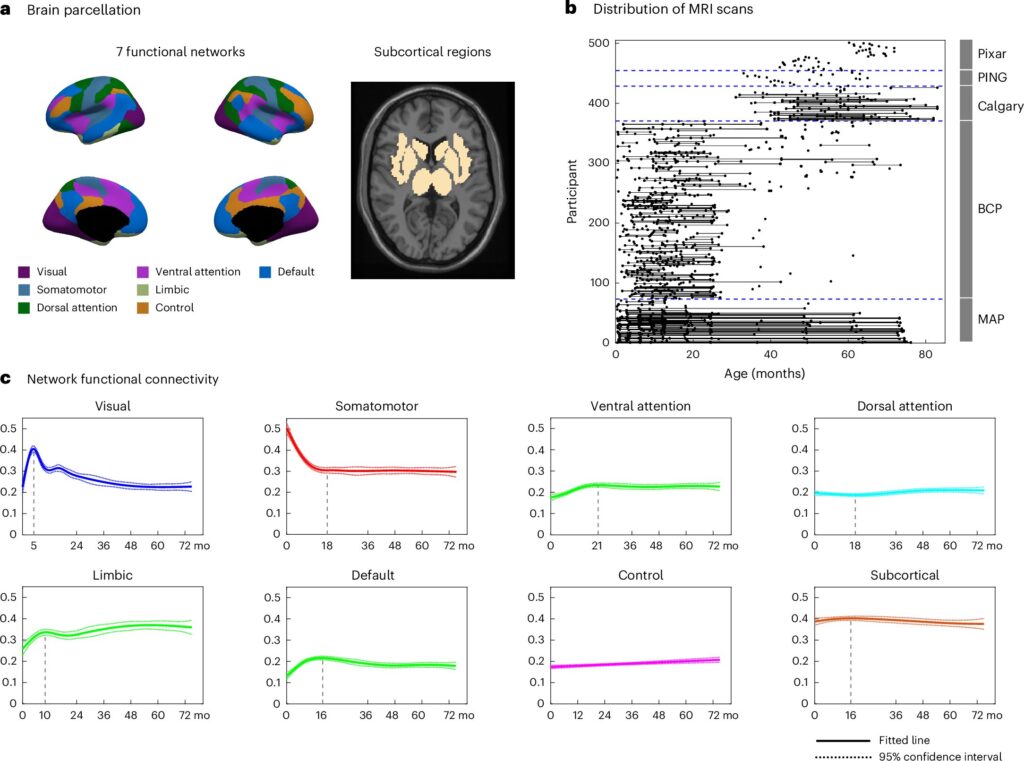Image by Christian Abella from Pixabay
A New Frontier in Understanding the Developing Brain
In a pioneering study, scientists have developed the first functional brain growth charts for children aged from birth to six years. Utilizing resting-state functional MRI (fMRI), this research offers unprecedented insights into how young brains develop, potentially transforming early detection of cognitive differences.
Charting the Brain’s Functional Growth
While pediatricians have long used physical growth charts to monitor a child’s development, similar tools for brain function have been lacking. This study bridges that gap by mapping the maturation of brain networks over early childhood. By analyzing 1,091 fMRI scans from 501 children, researchers identified key transitions in brain connectivity that correlate with cognitive abilities.
Key Findings
- Functional Brain Growth Charts: The study produced charts that track the development of brain networks responsible for primary functions, default mode activities, control processes, and attention.
- Cognitive Correlations: Variations in these developmental patterns were significantly associated with differences in early cognitive abilities, highlighting the importance of timely brain development.
- Methodological Advances: To ensure accuracy, the research accounted for differences in imaging states (sleep vs. awake) and minimized site-based variability using advanced statistical methods like elastic net regression and the ComBat method.

Brain growth charts of the functional connectivity within canonical functional networks during early childhood. Credit: Nature Human Behaviour (2025). DOI: 10.1038/s41562-025-02160-2
Implications for Early Detection and Intervention
This groundbreaking work lays the foundation for early identification of atypical brain development, which could lead to timely interventions for conditions such as autism spectrum disorders and attention deficit disorders. By establishing normative functional development patterns, healthcare providers may soon have a powerful tool to assess and support children’s cognitive health from the earliest stages of life.
The Road Ahead
As researchers continue to refine these functional brain growth charts, the potential for their application in clinical settings grows. Future studies may expand on this work to include diverse populations and explore the impact of environmental factors on brain development.
Curiosity Spark
How might these new brain growth charts revolutionize our approach to early childhood education and mental health? Share your thoughts in the comments below!










